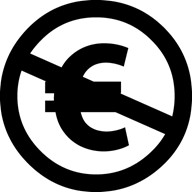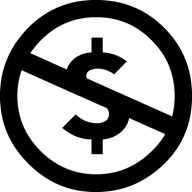Authors: A.A.Fuente, Universidad de Oviedo, Spain; A.Texeira, L.Morgado, Universidade Aberta, Portugal.
The general goal of this training material is to help teachers create academic materials while complying with the Intellectual Property (IP) laws, with licenses as the main point of interest. The focus is on Creative Commons (CC) licenses, as this licenses are probably the licenses of choice in the academic field.
Unit 1 introduces the main concepts needed to understand IP, including licenses. In Unit 2 we will learn about CC licenses and how to use them.
Unit 3 introduces additional IP concepts, as differences between countries in IP laws reside in these areas and they must be taken into account by the author of academic materials. These regional particularities are treated in Unit 4.
Creators of materials can use resources from others. In Unit 5 we will learn about the different types of resources that can be used, and a specific process to assure compliance with IP law when using these resources by checking the licenses. Unit 6 shows how to search for these resources considering the resource license.
The last unit is devoted to registration, which is usually the last thing done regarding IP when developing academic materials
Unit 2. Creative Commons licenses concepts
2.2. Creative Commons licenses
CC licenses are somehow inspired by the Open Source Software movement, especially by the GNU GPL (General Public License) developed by the Free Software Foundation.
The licenses are valid under copyright law internationally, although there has to be a mapping from the licenses to the particular law of each country.
There are 6 types of licenses. The user chooses one of the six depending on 4 different rights: attribution, non-commercial, share alike, and no derivatives.
A user can use the original work protected by a license for anything he or she wants, share the work with others, etc. as long as the limits expressed in the CC license are met.
2.2.1. (CC) Attribution
 Attribution states that the person (the licensee) can use the work protected by the license, but has to give credit to the author (and possibly comply with more conditions).
Attribution states that the person (the licensee) can use the work protected by the license, but has to give credit to the author (and possibly comply with more conditions).
That is, the user has to attribute the work he or she is using to the author (credit/cite). The correct way to attribute works under a CC license will be the treated in another unit.
This right is mandatory. Therefore, all uses of a CC licensed work must attribute the author (except if the author explicitly chooses otherwise).
2.2.2. (CC) Non-commercial NC

 Non-commercial means that the author only allows to use the work for non-commercial purposes. The problem is that deciding whether a purpose is “commercial” or not is quite vague. In Creative Commons terms, it is defined as:
Non-commercial means that the author only allows to use the work for non-commercial purposes. The problem is that deciding whether a purpose is “commercial” or not is quite vague. In Creative Commons terms, it is defined as:
“primarily intended for or directed toward commercial advantage or monetary compensation”
2.2.3. (CC) Share Alike SA
 New works can include or modify other works. An author chooses Share Alike when the wants that all the works that use his or her original work keep the same license used for the original. For example, if a photograph is licensed as Attribution – Non Commercial –Share Alike, a book that uses that photograph must be licensed likewise. That is, the book can not have commercial purposes (sold). You can use it in your own work, but only if it is licensed with the same license.
New works can include or modify other works. An author chooses Share Alike when the wants that all the works that use his or her original work keep the same license used for the original. For example, if a photograph is licensed as Attribution – Non Commercial –Share Alike, a book that uses that photograph must be licensed likewise. That is, the book can not have commercial purposes (sold). You can use it in your own work, but only if it is licensed with the same license.
This is also known as the “viral clause”, because the license for the original work “infects” any other work where it is used.
2.2.4. (CC) No derivatives ND
 No Derivatives means that the author disallows any modification made by others to his or her works. The work must be used as is, but can not be “touched”.
No Derivatives means that the author disallows any modification made by others to his or her works. The work must be used as is, but can not be “touched”.
You can not make derivatives from the work (remix, adapt, change, etc.). For example, a graph could be used in a new work, but the graph should be in its original form. No changes to the graph are allowed.